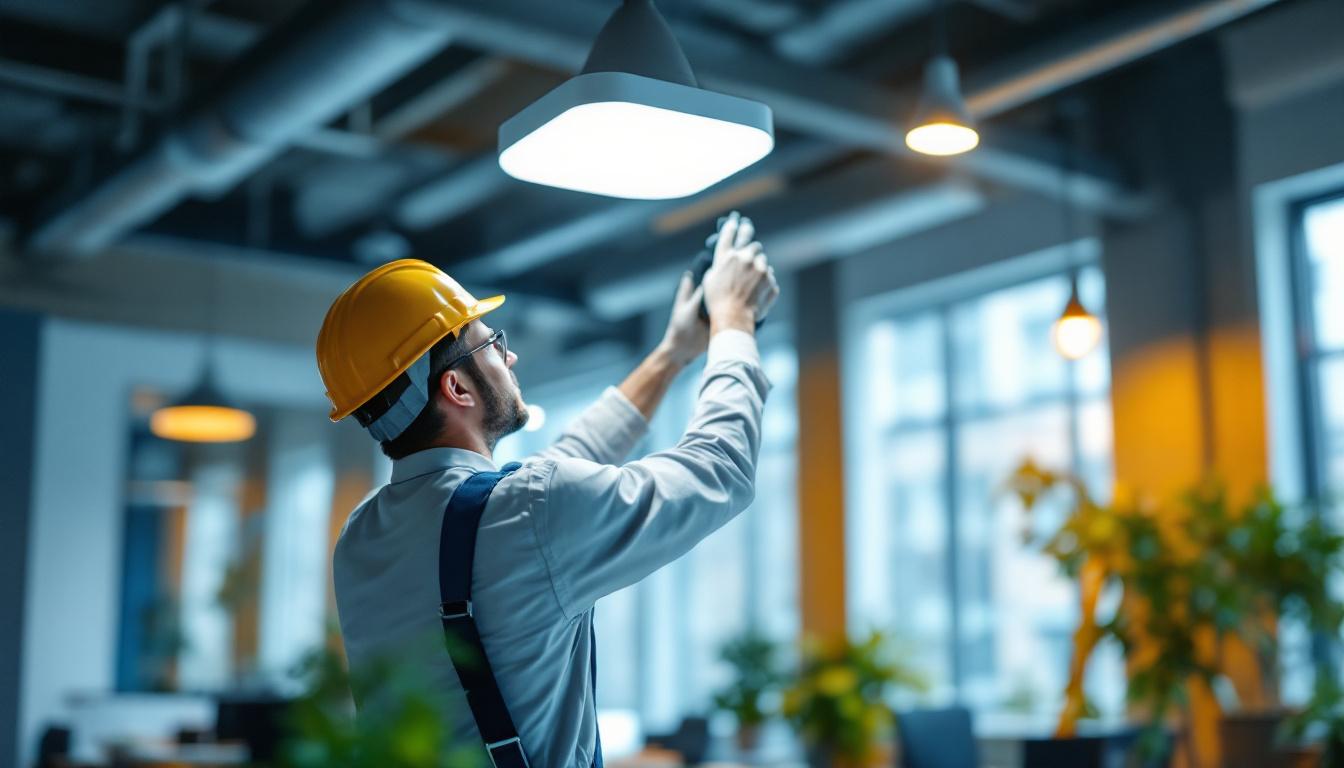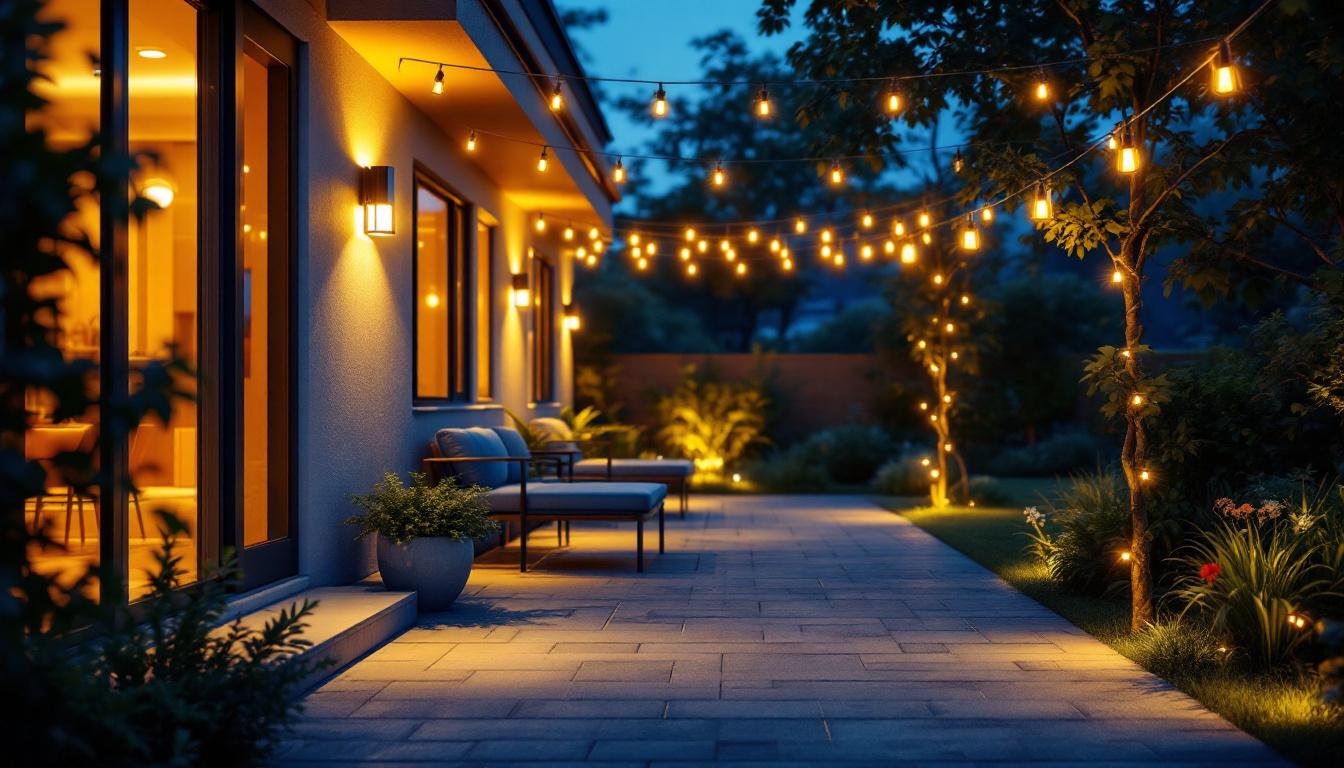
In the dynamic world of lighting design and installation, the choice of fixtures plays a pivotal role in determining both aesthetic appeal and operational efficiency. For lighting contractors, understanding the nuances of commercial light fixtures is essential for delivering high-quality results that meet client expectations while optimizing their own workflow. This article delves into how commercial light fixtures enhance efficiency for lighting contractors, exploring various types, their benefits, and best practices for implementation.
Choosing the right commercial light fixture is not merely a matter of preference; it significantly affects the overall performance of a lighting project. The right fixtures can enhance the ambiance of a space, improve energy efficiency, and reduce maintenance costs. For lighting contractors, making informed decisions about the fixtures they use can streamline installation processes and lead to greater client satisfaction.
Energy efficiency is a critical concern for many businesses today, and commercial light fixtures play a vital role in achieving this goal. LED fixtures, for example, consume significantly less energy compared to traditional incandescent or fluorescent lights. By opting for energy-efficient fixtures, contractors can help their clients reduce utility bills while also contributing to environmental sustainability.
Moreover, many energy-efficient fixtures come with advanced technology, such as smart sensors and dimming capabilities, which further enhance their efficiency. These features allow for automatic adjustments based on occupancy and natural light levels, ensuring that energy is used only when necessary. This not only improves efficiency but also extends the lifespan of the fixtures, reducing replacement costs over time. Additionally, businesses that invest in energy-efficient lighting may qualify for various rebates and incentives from utility companies, further enhancing the financial benefits of the initial investment.
Beyond functionality, the aesthetic aspect of lighting cannot be overlooked. Commercial light fixtures are available in a myriad of designs, styles, and finishes, allowing contractors to tailor their choices to the specific needs of each project. A well-chosen fixture can complement the architectural features of a space and create a cohesive design that enhances the overall atmosphere.
For instance, sleek, modern fixtures may be ideal for contemporary office spaces, while vintage-style fixtures could be more appropriate for restaurants or retail environments aiming for a nostalgic vibe. By selecting the right fixtures, contractors not only meet the lighting requirements but also elevate the visual appeal of the space, leading to higher client satisfaction. Furthermore, the strategic placement of fixtures can create focal points and highlight specific areas, such as artwork or merchandise displays, thereby enhancing the customer experience and encouraging longer visits or increased sales.
In addition to style and placement, the color temperature of the light emitted by fixtures plays a crucial role in setting the mood of a space. Warm white light can create a welcoming and cozy environment, making it perfect for hospitality settings, while cooler white light can enhance focus and productivity in office environments. Understanding the psychological effects of different lighting can empower contractors to make choices that not only illuminate but also inspire and energize the occupants of the space.
Understanding the various types of commercial light fixtures available is crucial for contractors looking to improve efficiency. Each type comes with its own set of advantages and applications, allowing for tailored solutions based on the specific needs of a project.
LED fixtures have revolutionized the lighting industry due to their energy efficiency and longevity. These fixtures are available in various forms, including panel lights, recessed lights, and high-bay lights, making them suitable for a wide range of commercial applications.
One of the standout features of LED fixtures is their low heat output, which reduces the load on HVAC systems. This not only contributes to energy savings but also enhances comfort in commercial spaces. Additionally, the wide range of color temperatures available with LED fixtures allows contractors to create the desired ambiance for different environments. Beyond their aesthetic versatility, LEDs also boast a longer lifespan, often exceeding 50,000 hours, which significantly reduces maintenance costs over time. This durability makes them an excellent investment for businesses looking to minimize operational disruptions and maximize their lighting budget.
While LED technology is on the rise, fluorescent fixtures still hold a significant place in commercial lighting. These fixtures are often used in offices, schools, and retail spaces due to their affordability and effectiveness in providing bright, even illumination.
Fluorescent fixtures are particularly useful in larger spaces where high light output is necessary. They can be easily integrated into existing infrastructure, making them a cost-effective choice for retrofitting projects. However, it is essential for contractors to consider the potential drawbacks, such as shorter lifespans and higher energy consumption compared to LEDs. Moreover, fluorescent lights can sometimes flicker or hum, which may be distracting in environments where focus and concentration are paramount. Despite these considerations, the availability of energy-efficient fluorescent options, such as T5 and T8 bulbs, continues to make them a viable choice for many commercial applications.
Track lighting offers flexibility and versatility, making it a popular choice for various commercial applications. This type of fixture allows for adjustable heads that can be directed to highlight specific areas or objects, making it ideal for retail displays, galleries, and restaurants.
For lighting contractors, track lighting presents an opportunity to create dynamic lighting schemes that can be easily modified as needed. This adaptability not only enhances the functionality of the space but also allows clients to change the ambiance without the need for extensive renovations. Additionally, track lighting systems can accommodate a variety of bulb types, including LEDs and incandescent options, allowing for further customization based on energy efficiency and aesthetic preferences. The ability to reposition fixtures along the track also means that businesses can refresh their lighting design to keep up with seasonal changes or promotional events, ensuring that their space remains engaging and visually appealing to customers.
Implementing commercial light fixtures effectively requires careful planning and execution. By following best practices, lighting contractors can ensure that their projects run smoothly and meet the expectations of their clients.
Before selecting fixtures, conducting a comprehensive lighting audit is essential. This process involves assessing the existing lighting conditions, identifying areas that require improvement, and understanding the specific needs of the space. Factors such as the purpose of the area, the amount of natural light available, and the preferences of the client should all be considered.
A thorough audit not only helps in selecting the right fixtures but also aids in creating a lighting design that optimizes energy efficiency and enhances the overall aesthetic. By taking the time to understand the unique requirements of each project, contractors can deliver tailored solutions that exceed client expectations.
In the modern era, leveraging technology can significantly enhance the efficiency of lighting design and installation. Lighting design software allows contractors to visualize their designs in a virtual environment, making it easier to experiment with different fixtures and layouts.
These tools often come with features that enable contractors to calculate energy consumption, determine optimal fixture placement, and even simulate how the lighting will look in various conditions. By utilizing such software, contractors can streamline their design process, reduce errors, and present more compelling proposals to clients.
The lighting industry is constantly evolving, with new technologies and trends emerging regularly. For lighting contractors, staying informed about the latest advancements in commercial light fixtures is crucial for maintaining a competitive edge.
Investing in training and continuous education can empower contractors to make informed decisions about the products they use. This knowledge not only enhances their credibility but also enables them to provide clients with the most up-to-date solutions that align with their needs and preferences.
Effective communication with clients is a cornerstone of successful lighting projects. Lighting contractors should prioritize collaboration with clients throughout the design and installation process to ensure that their vision is accurately translated into reality.
From the outset, it is essential to establish clear expectations regarding the project scope, timeline, and budget. By discussing these factors openly with clients, contractors can avoid misunderstandings and ensure that everyone is on the same page.
Additionally, providing clients with detailed information about the chosen fixtures, including their benefits and maintenance requirements, can foster trust and confidence in the contractor’s expertise. This transparency can lead to stronger client relationships and increased likelihood of repeat business.
Feedback is a valuable tool for improvement. Lighting contractors should actively seek input from clients during and after the project. This feedback can provide insights into what worked well and what could be improved in future projects.
By fostering an open dialogue, contractors can demonstrate their commitment to client satisfaction and continuous improvement. This approach not only enhances the quality of future projects but also strengthens client loyalty, leading to long-term partnerships.
In the competitive landscape of lighting contracting, understanding the role of commercial light fixtures is paramount for enhancing efficiency and delivering exceptional results. By selecting the right fixtures, leveraging technology, and maintaining open communication with clients, contractors can optimize their workflows and meet the diverse needs of their projects.
As the industry continues to evolve, staying informed about the latest trends and technologies will empower lighting contractors to provide innovative solutions that not only meet but exceed client expectations. Ultimately, the right commercial light fixture can transform a space, improve energy efficiency, and elevate the overall quality of lighting projects, making it an invaluable asset for any lighting contractor.
Ready to enhance your lighting projects with efficiency and style? At LumenWholesale, we provide lighting contractors with the highest quality, spec-grade commercial light fixtures at unbeatable wholesale prices. Say goodbye to local distributor markups and hello to a vast selection of reliable, high-performance lighting that meets the most rigorous industry standards. With free shipping on bulk orders, you can trust that you’re getting premium lighting at the best value — no hidden fees, no compromises. Elevate your lighting game and experience the perfect blend of quality, affordability, and convenience. Visit LumenWholesale for Wholesale Lighting at the Best Value, and transform your lighting projects today.

Discover the ultimate guide for lighting contractors with top resources on tube light fixtures.

Discover the top lighting solutions for garages that every contractor should be aware of.

Discover why dimmable outdoor flood lights are essential for lighting contractors—boost energy efficiency, enhance security, and improve ambiance.

Discover the critical role of lighting in commercial spaces and why it’s essential for lighting contractors to prioritize innovative solutions.